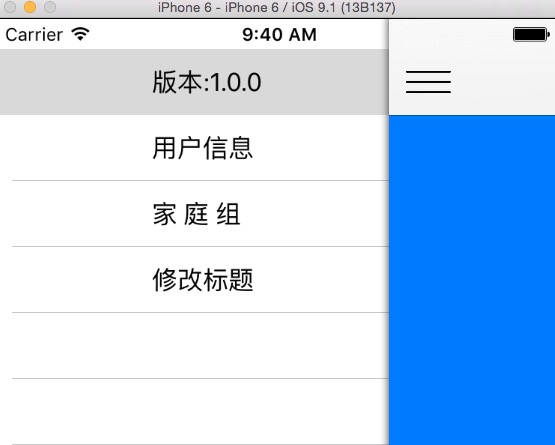本文介绍Swift和自定义UITableView,具体方法流程和Objective-C一样。首先创建一个自己的UITableViewCell,然后在VIEWCONTROLLER中注册到tableview,注册数据源和代理。最后重写数据源的2个方法。下面开始动手。
首先创建UITableViewCell,XCODE中右键->New File->Cocoa Touch Class,然后subclass选UITableViewCell,勾选xib,这样好布局。当然你也可以代码实现。然后打开XNIB文件,在上面添加一个Label,然后在对应的UITableViewCell中拖出这个控件的定义。代码如下:
import UIKit
class MenuViewCell: UITableViewCell {
@IBOutlet var label: UILabel!
override func awakeFromNib() {
super.awakeFromNib()
// Initialization code
}
override func setSelected(selected: Bool, animated: Bool) {
super.setSelected(selected, animated: animated)
// Configure the view for the selected state
}
}
OK,然后在ViewController中实现注册和数据源。下面代码:
import Foundation
import UIKit
class LeftMenuViewController: BaseViewController,UITableViewDataSource,UITableViewDelegate {
//菜单识别串
let identify = "MenuViewCell"
var menuStrArray = ["版本:1.0.0","用户信息","家 庭 组","修改标题"]
@IBOutlet var menuTabView: UITableView!
override func viewDidLoad() {
super.viewDidLoad()
// Do any additional setup after loading the view, typically from a nib.
menuTabView.dataSource = self
menuTabView.delegate = self
menuTabView.registerNib(UINib(nibName: identify, bundle: nil), forCellReuseIdentifier: identify)
}
override func didReceiveMemoryWarning() {
super.didReceiveMemoryWarning()
// Dispose of any resources that can be recreated.
}
func tableView(tableView: UITableView, numberOfRowsInSection section: Int) -> Int{
return menuStrArray.count
}
func tableView(tableView: UITableView, cellForRowAtIndexPath indexPath: NSIndexPath) -> UITableViewCell{
let cell:MenuViewCell = tableView.dequeueReusableCellWithIdentifier(identify, forIndexPath: indexPath) as! MenuViewCell
cell.label.text = menuStrArray[indexPath.row]
return cell
}
}
最后上图:

本文链接:https://it72.com:4443/7940.htm